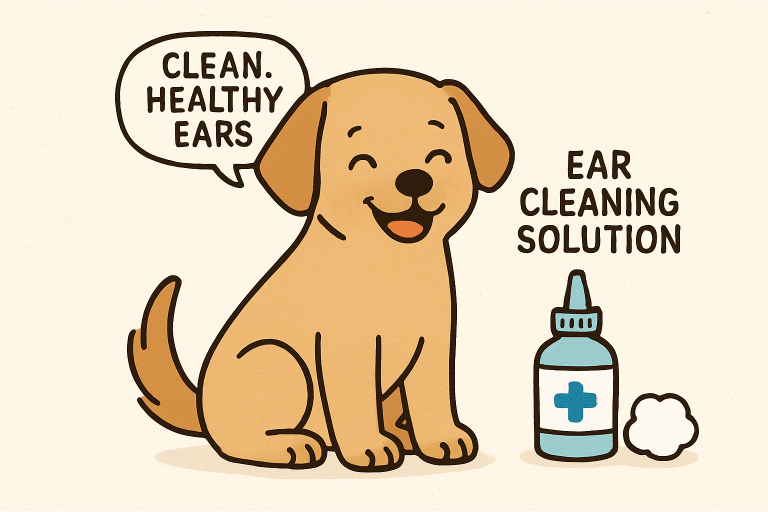Contents
Table of Contents
- Introduction
- Regular Ear Cleaning
- Keeping Ears Dry
- Managing Allergies
- Proper Grooming
- Dietary Considerations
- Environmental Management
- Monitoring and Early Detection
- When to Consult a Veterinarian
Ear infections in dogs are a common concern that can affect any breed, especially those with floppy ears or who love swimming. Proactive care is essential to avoid discomfort and long-term issues for your pet. By addressing daily routines and environmental factors, you can dramatically reduce the likelihood of infections developing. For more details about symptoms and treatment options for a dog ear infection, attentive prevention is always the best policy. Preventing ear infections is crucial for your dog’s health and comfort, avoiding costly veterinary visits and medications. Establishing healthy habits like routine cleaning, grooming, nutrition, and monitoring can significantly reduce pain and health complications. Recognizing risk factors and taking preventative actions is essential for maintaining a healthy pet.
Regular Ear Cleaning
One of the most important steps in preventing ear infections is keeping your dog’s ears clean. Use a veterinarian-recommended ear cleaning solution and soft cotton balls to gently wipe away debris and wax from the outer ear. Take care not to insert anything deep into the ear canal, as this may push debris further in and risk harming delicate structures. Depending on your dog’s breed, activity level, and medical history, ear cleaning may be needed once a week or more often. Dogs that swim frequently or have naturally hairy or pendulous ears may need extra attention. Always observe your pet’s reaction while cleaning to ensure there is no discomfort or irritation.
Keeping Eas Dry
A damp ear environment allows bacteria and yeast to thrive. After water activities or baths, gently dry your dog’s ears with a soft towel. Specialized ear-drying solutions are available to remove residual moisture safely. Whenever possible, avoid letting water enter your dog’s ears by placing cotton balls in the outer ears during baths (removing them afterward) and tilting your dog’s head away from the water flow.
Managing Allergies
Chronic ear infections often point to underlying allergies, which cause inflammation and increased wax or oil production within the ear. Identifying allergies whether food-related or environmental, like pollen or dust mites can help prevent recurring infections. Discuss with your veterinarian about the best way to diagnose and manage allergies for your dog; options can range from elimination diets to prescription medications or hypoallergenic bedding.
Proper Grooming
Routine grooming plays a vital role in canine ear health. For dogs with excessive hair growth in or around their ears, periodic trimming or gentle ear hair plucking (performed under veterinary guidance) can help improve air flow and reduce moisture accumulation. Care must be taken not to overpluck, as this can irritate the sensitive skin and lead to additional problems. Maintaining a regular grooming schedule also helps spot early signs of trouble.
Dietary Considerations
A robust immune system helps protect your dog from infections. Incorporating omega-3 fatty acids and other anti-inflammatory components into your dog’s diet is beneficial. A 2023 study found that a meat-based, whole-food diet significantly reduces the chance of young dogs developing otitis later on. Even blending dry dog food with more than 25% whole foods had a noticeable preventive impact. Regularly consult your veterinarian to ensure your dog receives complete and balanced nutrition.
Environmental Management
Your dog’s environment is another crucial factor. Dust, mold spores, pollen, and other irritants can trigger inflammation within the ear canal. Regular cleaning of your home, including your dog’s bedding and favorite lounging spots, helps reduce allergen exposure. For water-loving dogs, consider dog-friendly ear protection devices during swimming sessions. Maintaining general hygiene and a dry living space lowers overall risk.
Monitoring and Early Detection
Frequent inspection of your dog’s ears ensures that any developing infection is caught early. Look for redness, swelling, unusual discharge, or bad odors. Dogs may also shake their heads or scratch at their ears if there’s discomfort. Timely detection results in faster, more effective treatment—noticing subtle symptoms and acting early can prevent more serious issues.
When to Consult a Veterinarian
If you observe ongoing signs such as repeated head shaking, persistent scratching, balance changes, or signs of pain, consult your veterinarian promptly. Early professional intervention not only relieves your dog’s discomfort but also helps address the underlying cause before complications arise. Your vet can recommend tailored treatments, rule out more serious conditions, and advise on further preventive care specific to your dog’s needs.
By following these practical steps—cleaning, drying, grooming, dietary management, environmental care, and regular checks—you can lower your dog’s risk of ear infections, ensuring a more comfortable and joyful life for your canine companion.

